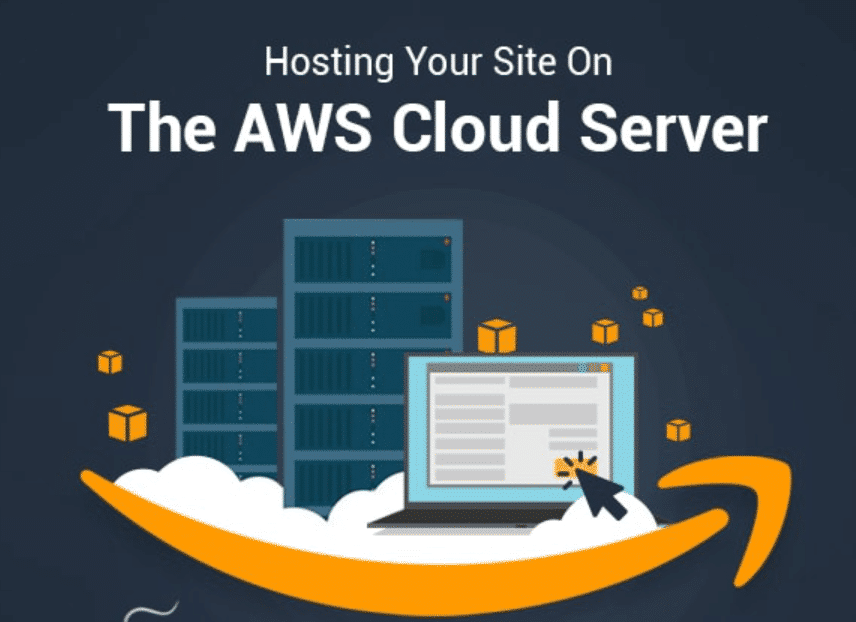AWS Cloud Server – In today’s hyper-connected world, businesses and developers require fast, secure, and flexible computing infrastructure. Amazon Web Services (AWS) cloud servers provide just that—a reliable and scalable foundation for modern applications, websites, and data processing needs. As the leading cloud computing platform, AWS offers a wide range of cloud-based services and infrastructure that have revolutionized how businesses operate.
This comprehensive guide explores everything you need to know about AWS cloud servers: their architecture, types, use cases, benefits, pricing, security, and future trends. Whether you’re an enterprise leader, tech enthusiast, or small business owner, understanding AWS cloud servers will empower you to make smarter decisions in your digital journey.

What Is an AWS Cloud Server?
An AWS cloud server is a virtual server hosted on Amazon’s global cloud infrastructure. These servers are part of the Amazon Elastic Compute Cloud (EC2) service, which provides resizable compute capacity in the cloud. Rather than maintaining expensive on-premises hardware, users can launch cloud servers in minutes, scale them on demand, and pay only for what they use.
AWS cloud servers are typically referred to as EC2 instances, and they come in various sizes, configurations, and capabilities to suit different workloads.
Core Features of AWS Cloud Servers
1. Elasticity and Scalability
AWS allows you to scale your server capacity up or down automatically with Elastic Load Balancing (ELB) and Auto Scaling groups. This ensures your application can handle traffic spikes without manual intervention.
2. Global Reach
AWS has data centers (availability zones) spread across multiple continents. This geographic diversity means you can deploy servers close to your end-users for reduced latency and improved performance.
3. High Availability and Redundancy
AWS cloud servers are designed for 99.99% uptime, thanks to fault-tolerant infrastructure, automated backups, and failover capabilities across multiple availability zones.
4. Security
AWS offers industry-leading security measures including encryption, firewalls, Virtual Private Clouds (VPCs), and Identity and Access Management (IAM). Customers retain full control over their data and infrastructure security.
5. Customizability
You can choose the operating system, software stack, storage size, and networking configuration that best fits your needs. This flexibility is perfect for developers and businesses with unique technical requirements.
Types of AWS Cloud Servers (EC2 Instances)
AWS offers a broad range of instance types to suit various use cases:
-
General Purpose (e.g., t3, t4g, m5): Balanced compute, memory, and networking for most workloads.
-
Compute Optimized (e.g., c5, c6g): Ideal for compute-intensive tasks such as batch processing and gaming.
-
Memory Optimized (e.g., r5, x2idn): Designed for high-performance databases and in-memory caches.
-
Storage Optimized (e.g., i3, d3en): High disk throughput for big data and distributed file systems.
-
Accelerated Computing (e.g., p4, inf1): Leverages GPUs and FPGA for machine learning and high-performance computing (HPC).
Each type comes with different configurations (vCPUs, memory, network bandwidth) and pricing structures.
Common Use Cases for AWS Cloud Servers
1. Web and Application Hosting
Launch and manage websites, e-commerce platforms, and mobile backend services with full control over resources and scalability.
2. Data Analytics and Machine Learning
Use AWS cloud servers with tools like SageMaker or EMR to train models, analyze big data, or run artificial intelligence applications.
3. Game Development and Hosting
Host multiplayer games or game servers with low-latency connections and autoscaling capabilities.
4. Enterprise Applications
Run SAP, Microsoft, Oracle, and other enterprise apps without worrying about physical infrastructure.
5. Disaster Recovery and Backup
Deploy failover systems and automated backups to ensure business continuity during outages or disasters.
How to Launch an AWS Cloud Server (EC2 Instance)
1. Sign In to AWS Console
Create an account or sign in to your AWS Management Console.
2. Launch EC2 Instance
Navigate to EC2, click “Launch Instance,” and choose an Amazon Machine Image (AMI).
3. Choose Instance Type
Select the desired instance type (e.g., t3.micro for free tier users).
4. Configure Settings
Set network, storage, tags, and security group configurations.
5. Key Pair & Launch
Create a key pair for SSH access and launch the instance.
6. Connect to Server
Use SSH or RDP (for Windows) to access your server and deploy applications.
Pricing Models
AWS offers flexible pricing based on how you use cloud servers:
-
On-Demand: Pay by the hour or second, best for short-term or unpredictable workloads.
-
Reserved Instances: Commit to 1- or 3-year usage for significant discounts.
-
Spot Instances: Buy unused capacity at lower prices (great for fault-tolerant workloads).
-
Savings Plans: Flexible savings model that applies to a wide range of AWS services.
Cost Management Tips
-
Use AWS Cost Explorer to analyze spending.
-
Set budgets and alerts.
-
Use Auto Scaling to avoid over-provisioning.
-
Terminate unused instances.
Security Best Practices
-
Use IAM Roles and Policies
Limit access with least-privilege permissions. -
Enable Encryption
Encrypt data at rest and in transit. -
Implement Firewalls
Configure Security Groups and Network ACLs. -
Patch Regularly
Update OS and software to fix vulnerabilities. -
Monitor with CloudWatch
Use AWS CloudTrail and CloudWatch to monitor activity and detect anomalies.
AWS Cloud Server vs. Other Providers
| Feature | AWS | Azure | Google Cloud |
|---|---|---|---|
| Market Share | Largest globally | Second-largest | Rapidly growing |
| Services Offered | 200+ services | Broad enterprise tools | Strong AI/ML integrations |
| Pricing | Flexible models | Similar | Competitive |
| Ecosystem | Mature with rich tools | Integrated with MS stack | Deeply integrated with G Suite |
Future Trends in AWS Cloud Computing
-
Edge Computing: AWS Outposts and Wavelength are enabling edge deployments.
-
Serverless Expansion: More services will be abstracted from infrastructure with Lambda.
-
AI and Automation: AWS is embedding machine learning into core services.
-
Quantum Computing: Amazon Braket provides early access to quantum processing.
Conclusion
AWS cloud servers are at the heart of today’s most innovative digital services. They empower organizations to build, deploy, and scale applications faster and more efficiently than ever before. With a wide range of options, robust security, and global infrastructure, AWS cloud servers provide the foundation for reliable, cost-effective, and high-performing cloud computing.
Whether you’re a startup deploying your first app or an enterprise migrating legacy systems, AWS cloud servers offer a flexible and powerful platform to meet your goals. As technology continues to evolve, AWS remains at the forefront—redefining what businesses can achieve in the cloud era.

